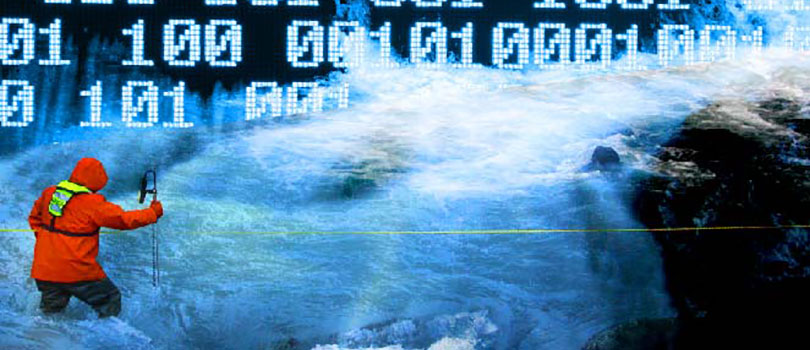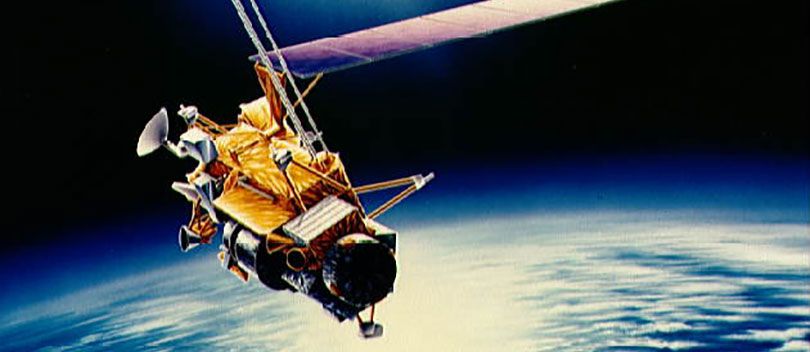
USGS Goes Live With AQUARIUS Time-Series Software
The United States Geological Survey (USGS) has replaced its custom, in-house developed, Automated Data Processing System (ADAPS) originally designed in 1985 with the commercial-off-the-shelf (COTS) AQUARIUS Time-Series software. The state of Alabama, of the USGS Lower Mississippi – Gulf Water Science Center, has now officially retired the ADAPS system. This is the first in a scheduled deployment rollout of all 50 states.
This is a big deal, not only for Aquatic Informatics and for the USGS, but for the world.
There are several factors at play in why the USGS decided to go with a commercial rather than a custom designed data management system. There have been substantial savings from shared capital investment and there will be affordable ongoing maintenance costs. In the context of rapidly evolving technology, the sustainability of perpetual updates is ensured by a global user-base. However, these considerations are more important to the bean counters than they are to me.
The biggest thing, for me, is that the USGS wants to share their investment in how hydrometric data should be managed with the rest of the world.
The best and the brightest hydrologists and hydrographers in the USGS have had over 30 years of development of ADAPS to refine and improve it. A retrospective review of everything that was good about ADAPS made it to the top of the requirements list for AQUARIUS Time-Series. However, many of these ‘good’ things had been limited by the technology of the day to being relatively arcane and difficult to learn. All this goodness was redesigned within a modern architecture designed from the ground up from an end-user experience perspective.
The result of this process is a product that is optimized for data quality management.
Whereas there are many commercial, and custom, systems that are useful for data management, there is no other that can match the business processes built into ADAPS for ensuring data quality. USGS takes great pride in producing data of the highest quality, and now those same business processes have been improved, optimized, and built into a commercial system available to anyone, anywhere, in the world.
There are no other water monitoring agencies that operate at the same scale as the USGS.
In order to centralize all of their data from all 50 states, they need a highly performant system. They specified a data velocity of one minute ‘gage-to-page’ for hundreds of thousands of parameters. This ambitious requirement led to a deep re-design of the fundamental architecture in AQUARIUS with the happy result that AQUARIUS Time-Series is now fully scalable from the needs of the smallest monitoring agency to the very largest.
With the rapid and unpredictable pace of development of field technologies, the USGS needed to ensure that the data processing algorithms were flexible. The result is a data processing architecture that enables data derivation to be user-configured for the use of new parameters in, as yet unimagined, computational chains while preserving full traceability of data provenance.
The USGS has a myriad of internal and external systems that have a data dependency.
Preserving all of these essential linkages requires a rich web service Application Program Interface (API) for data in, data out, and for system configuration. This gives the new AQUARIUS Time-Series a very powerful extensibility that can be administered for transparent adaptability with important legacy, or new and emerging, information services with automated, efficient, and reliable data throughput.
Everyone’s data is important.
However, designing for the security and integrity of all the data in the USGS archive gets extra special attention. I have no idea how many zeros belong to the left of the decimal place to place a value on the future value of USGS data assets. Consider the value of all water allocation decisions, water infrastructure investments, life and property safety and security actions, as well as environmental benefits that can ultimately be traced to reliable USGS data. Think of from now until there is no longer a need for such data and information. I would guess we are talking about a lot of zeros.
Developing for the USGS brings the same attention to quality in design and implementation as USGS brings to the quality of the data itself. The process and procedures for software development and quality control had to be relentlessly rigorous to meet the expectations of USGS acceptability oversight. This may not seem very exciting but means that as hundreds of experienced USGS hydrographers get their hands on the software they will likely find very few faults. It also means that any fixes to issues found can be readily dispatched.
As exciting as all of this is, the USGS deployment of AQUARIUS Time-Series is not an endpoint, it is only a waypoint.
The business of water monitoring is expanding and evolving. Hydrographers are quick to adapt to new technologies and to an ever-changing role in the creation and curation of essential and foundational water information. The USGS has invested in a modern system designed for change resilience. This marks the start of an era of systematic continuous improvement. That is reason enough to celebrate!


